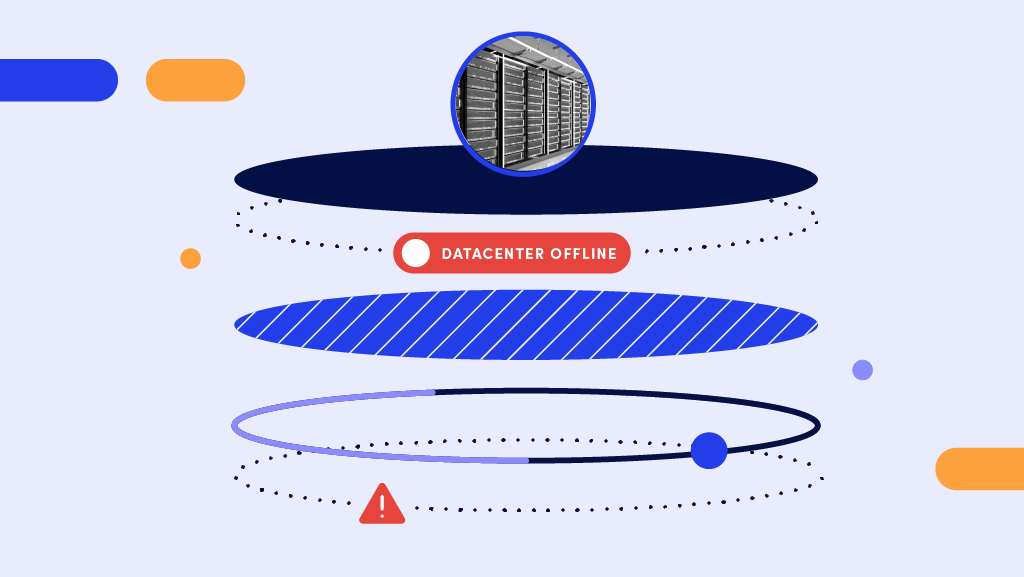by Julia Hazel, Ph.D
Climate change-driven extreme weather events wreaked havoc across the world this past summer and amplified concerns of data center resiliency. The possibility that “The Internet wasn’t built to endure climate change,” as stated in InformationWeek, seems more likely than ever. In July, an unprecedented heat wave hit the UK and temperatures reached the highest ever recorded in the region. In addition to the toll on human life and devastating wildfires, the heat also impacted the data center industry. At least two data centers controlled by Google and Oracle were forced to shut down due to cooling system problems. Unfortunately, this likely was not a black swan event. As with many other global challenges, the black swan is dead, and the shutdown is indicative of the growing risk water scarcity poses to data centers and supply chains across the globe.
Data Centers, Supply Chains, and Climate Change
Data centers power the cloud infrastructure fundamental to modern daily life and the overall functioning of businesses and industries. Cloud infrastructure is imperative to the supply chain and allows for logistical efficiency, management of inventory, and enterprise planning. Outages in London underscore the fact that data centers are an often-overlooked component of supply chains that are increasingly under heightened risk from climate change. Data center closures due to extreme weather events — which are projected to become more severe in the coming years — will lead to rising costs and disruptions across the supply chain.
The risks to data centers from climate change extend beyond heat waves. Data centers need vast amounts of water for two purposes: electricity generation and cooling. Drought and water scarcity are therefore enormous threats to operations. According to Your Computer is on Fire, midsize data center consumes about 400,000 gallons of water each day while larger data centers can consume up to 1.7 million gallons (about twice the volume of an Olympic-size swimming pool) per day. In a paper published last year, it was reported that the U.S. data center industry uses water from 90% of U.S. watersheds, and 20% of data centers rely on watersheds under moderate to high stress. Water use limitation has not been prioritized due to the tradeoff between using more energy-intensive closed loop chillers or water-intensive evaporative cooling. In short, water scarcity will pose an extreme risk to data center operations, and more attention should be focused on water usage and operational resilience given the threat of climate change.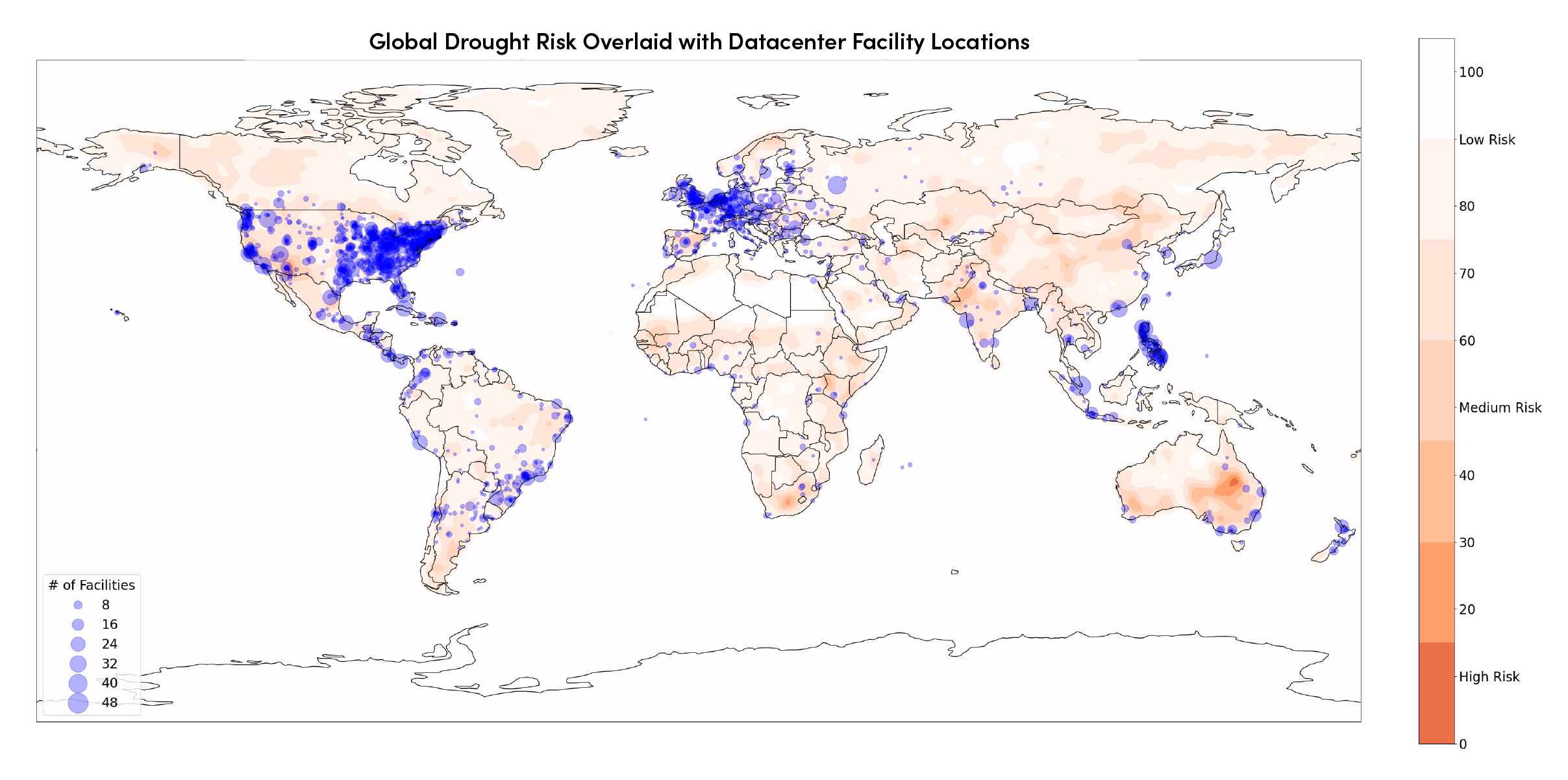
A Global Analysis of Data Centers and Water Scarcity
The threat that climate change poses to exacerbating drought motivates our analysis on data centers found in water-scarce regions that place extra stress on the already strained environment. We compare global data center facility locations to both the historical drought risk, based on the historical frequency of drought events weighted by magnitude, and the drought risk we attribute to climate change, based on the linear multi-decadal trend of drought severity. The drought risk is calculated from global Climate Research Unit Palmer Drought Severity Index data that spans 1901-2021 and scaled between 0-100 globally on a 10km-by-10km grid. We consider drought risk scores below 34 to be “high” risk and scores below 67 to be “medium” risk.
Our findings show that out of 4,772 global data centers, 34 are within areas that have a historical high drought risk, and 665 are located within areas of medium drought risk. Those data centers within high-risk locations are primarily located within Arizona, which has recently become a data center hotspot for large U.S. companies such as Microsoft, Google, and Facebook despite record low water levels at Lake Meade and the Colorado river.
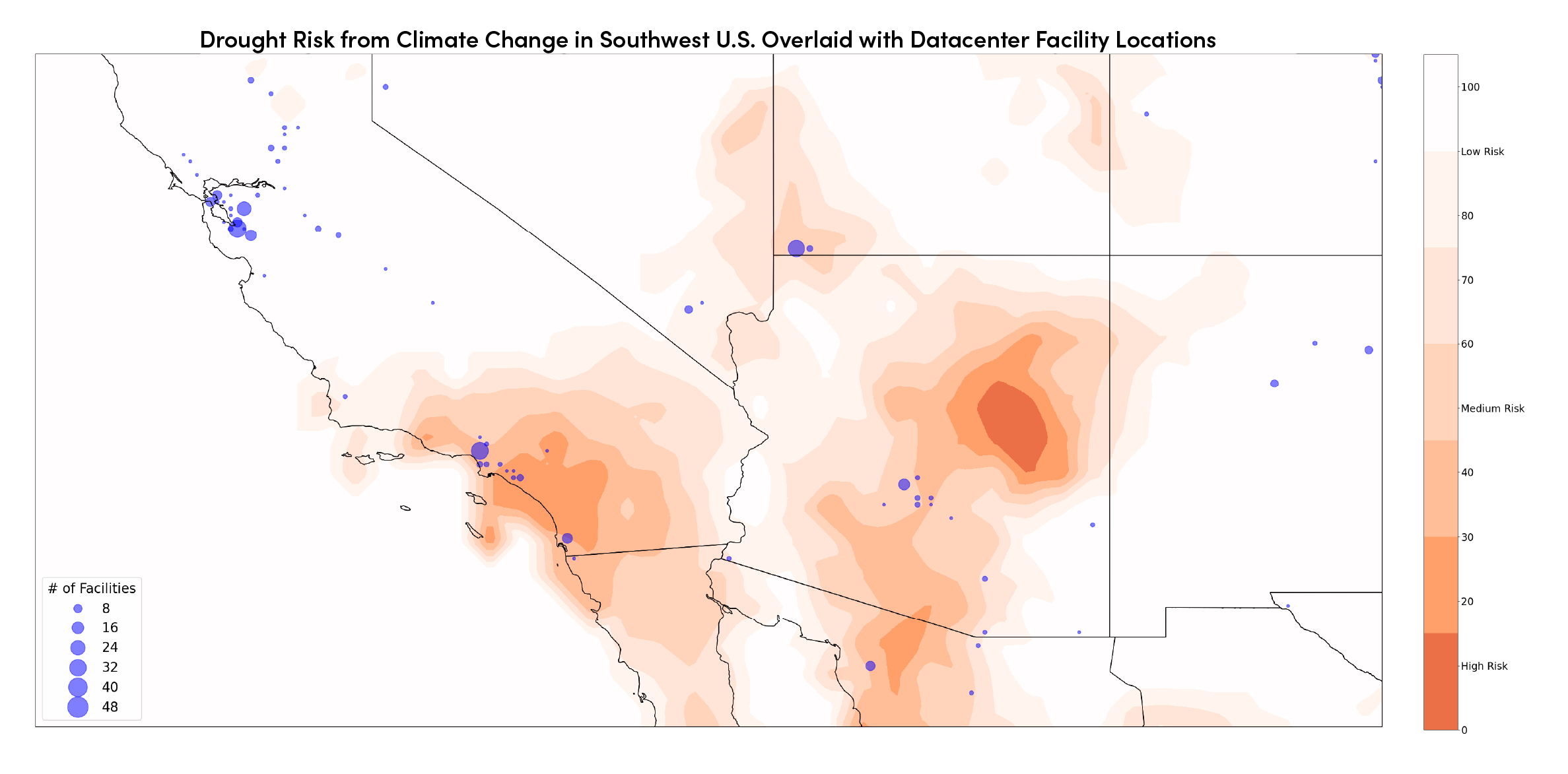
These numbers are even more stark when looking at the drought risk attributed to climate change. Looking ahead at the future risks posed by climate change, 15% of global data centers are in high-risk areas such as the Southwestern U.S., Western Europe, and Japan, where the trend in drought conditions has worsened in recent decades, and approximately 33% or 1,566 of all data center facilities are within medium risk areas. Equinix, one of the largest data center corporations that serves companies such as Amazon, Facebook, and Apple, has multiple locations within these high-risk areas.
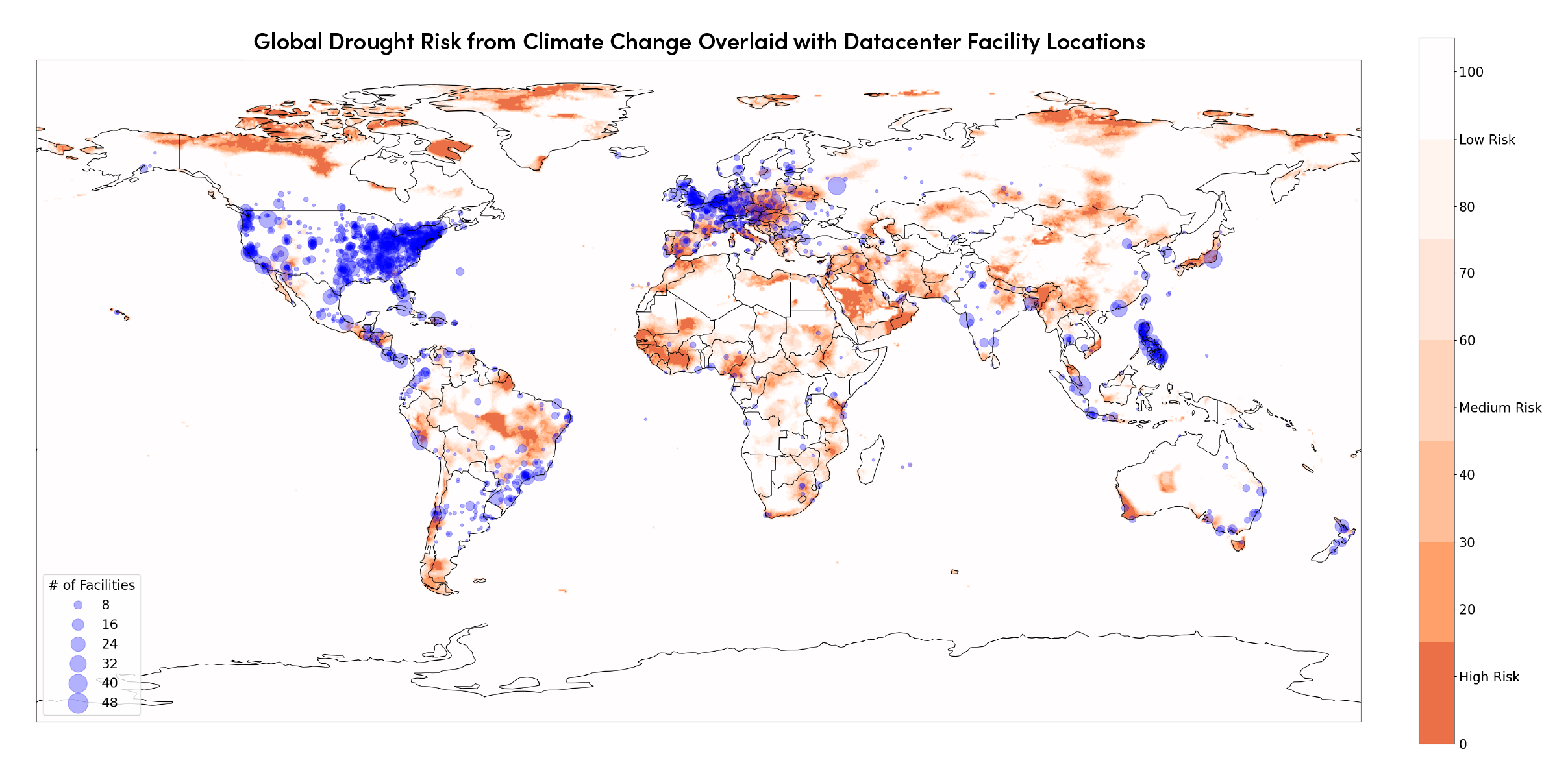
Climate change will lead to unpredictable events and various disruptions, and these risks need to be mitigated where possible. Our analysis of drought risk and data center facilities highlights the need for climate change to be considered when constructing data centers and assessing the potential supply chain disruptions that may occur at the intersection of data centers and water scarcity. The geographic locations of these data centers will determine their water footprint and their resultant impact on the surrounding environment, in many cases exacerbating already pressing water shortages.
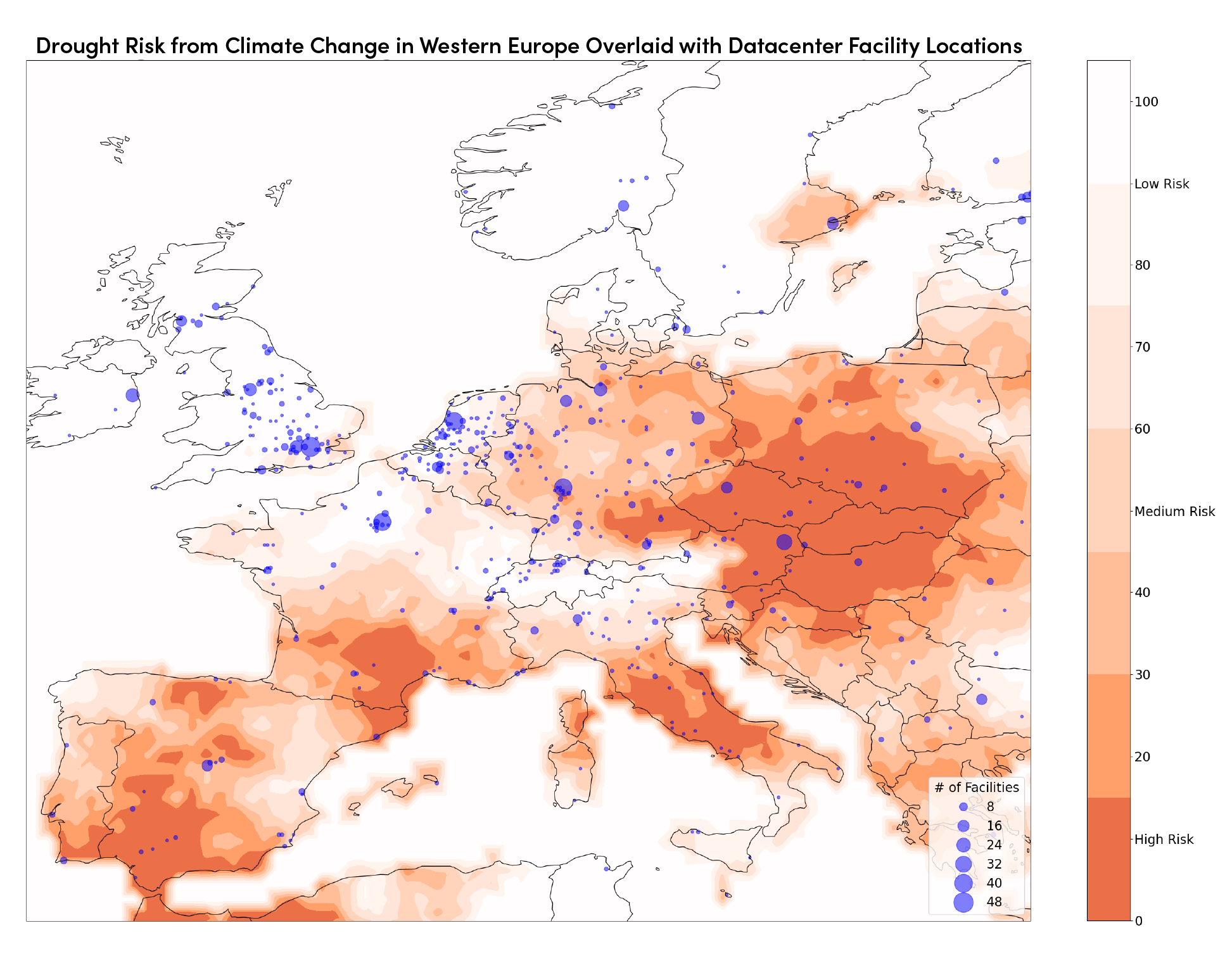
The risk of climate change to data centers extends beyond water scarcity and droughts. Hurricanes and severe weather, forecasted to become more severe with climate change, will pose a large cybersecurity risk to data centers if critical infrastructure is damaged during these events. Given the importance of cloud infrastructure to the supply chain, organizations should itemize those data centers on which their supply chains (and their livelihoods) rely and assess the current and future risks posed by climate change to augment their resiliency and avoid disruption from climate-related events.
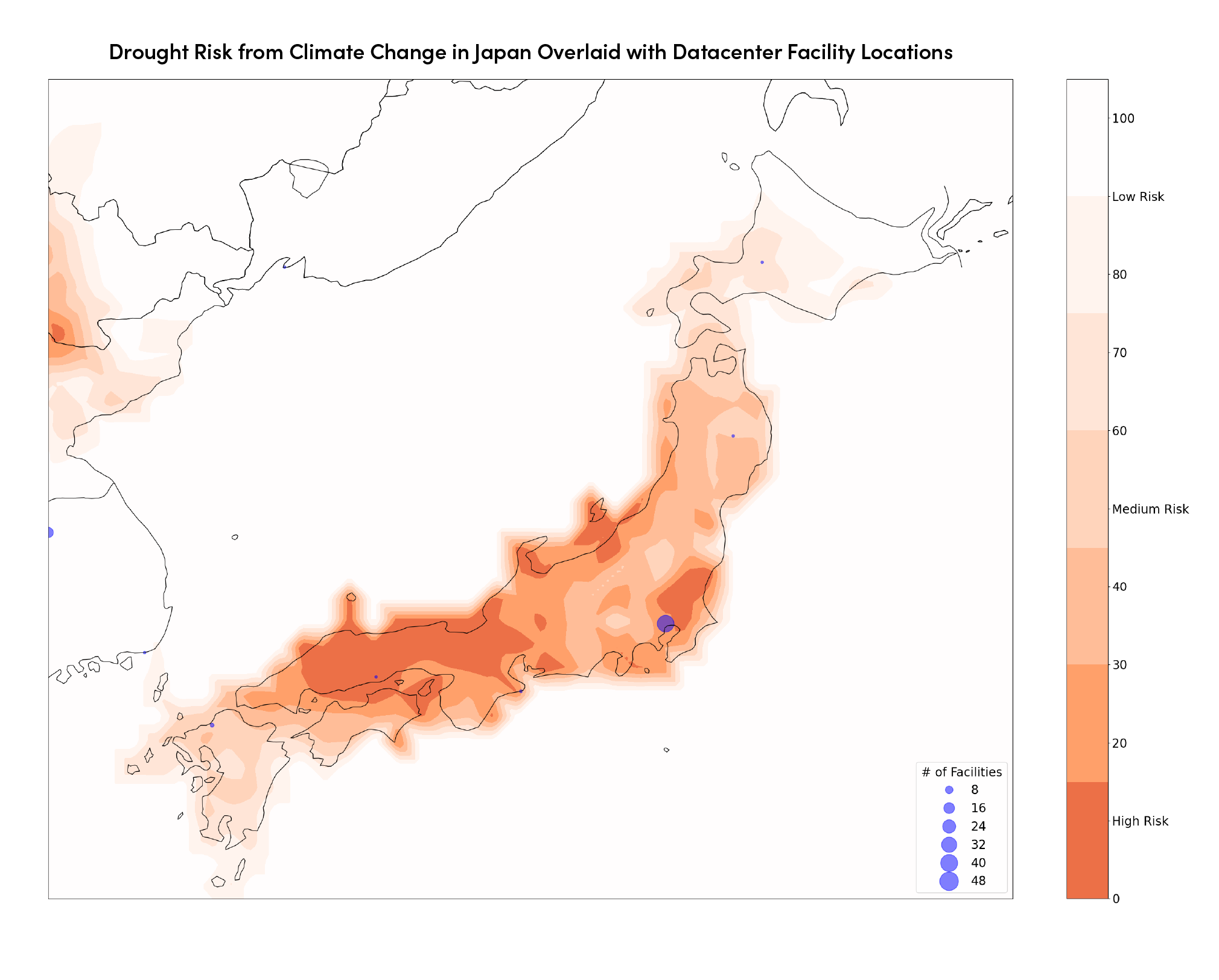
To learn more about how the Interos platform can help prepare companies to face climate change challenges, visit interos.ai.


